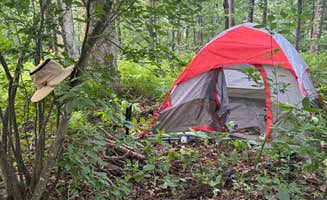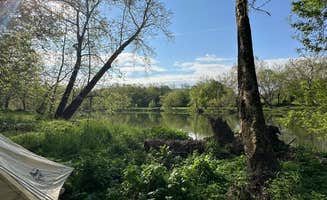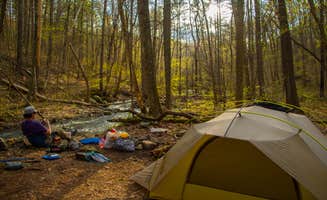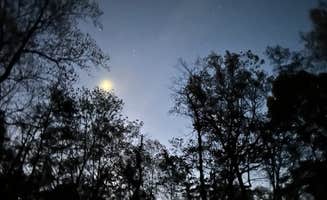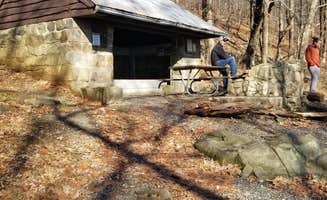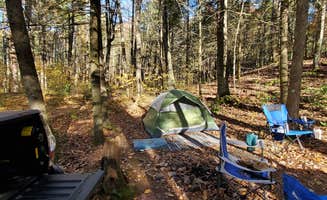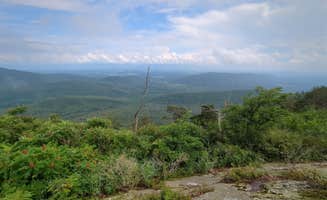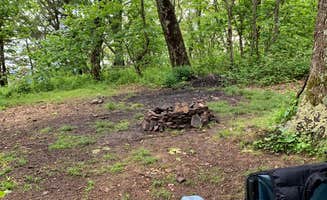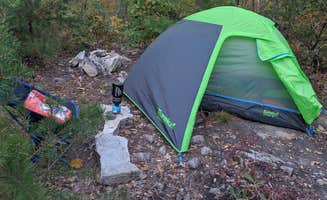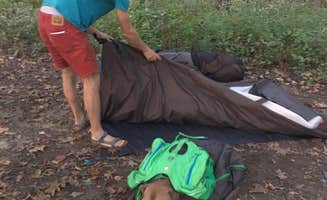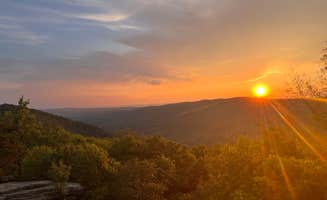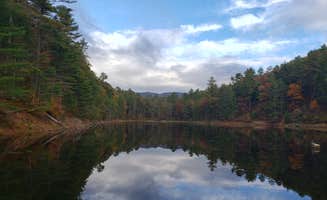Dispersed camping areas near Shenandoah, Virginia range from 1,200 to 3,200 feet in elevation across the George Washington National Forest. Most sites experience significant temperature variations, with summer highs averaging 85°F and winter lows dropping to 20°F. Fall camping is particularly popular when the forest transitions through vibrant red and orange foliage, typically peaking from mid-October through early November.
What to do
Fishing opportunities: The pond at Braley Pond Dispersed Camping & Day Use Area is stocked with trout seasonally. "The pond is stocked with trout in season, check DGIF site for dates," notes Paul P. The area offers additional recreational options beyond fishing. "There are also trails along the pond's edge. We didn't explore too in depth, so there may be more hiking available," shares Amy S.
Mountain hiking: Access the Massanutten Trail system from several dispersed campsites. At Veach Gap - GWNF - Backpacking Site, you'll find "breathtaking views of the Shenandoah River and surrounding mountains. Very much worth the 4 mile hike up to the site. 1,200ft elevation difference from the trailhead to the site," according to TJ W. This trail connects to a larger network offering multiple day-hiking options.
Wildlife viewing: Bears are common throughout the region. At Laurel Prong Trail Dispersed camping, Allan M. reports: "Bears were constantly checking out our tent during night...after one bear sniffed that sucker out 15 minutes later while we were in our tent we heard the first one full sprint and slobbering to check it out." Deer sightings are also frequent at several camping areas.
What campers like
Secluded campsites: Switzer Lake Dispersed Camping offers sites away from crowds. Adam G. shares, "I've camped here probably 12 times over the past 2 years and I seem to always find another awesome spot every time I go. There is a huge variety of spots, starting from huge ones right on the lake to more secluded, smaller spots deeper in the woods along the creek."
Waterfront camping: Multiple sites feature water access. At South Fork Shenandoah River, Sumner C. notes, "The road to get to the campsite was well maintained and easy to get to. Campsites themselves were a tad overgrown but it was the beginning of the season. Seemed to be about a dozen spots to camp. Each site had its own fire pit. Quiet and peaceful."
Dark skies for stargazing: Minimal light pollution at higher elevation sites. At Flagpole Knob, Sydney D. remarks, "If you really wanna be alone this is the spot. Camped up there with just my dog and I doubt there was a single person for miles around. The sunset and sunrise views are insane." Campers frequently mention exceptional night sky viewing from ridge-top sites.
What you should know
Vehicle requirements: Many sites require high-clearance or 4WD vehicles. At Flagpole Knob, David B. cautions, "This site requires a 4x4 vehicle with clearance. The trail leading to and from camp can be a bit tricky for some." However, not all visitors follow this advice. SomadNomad M. shares, "They said, no way, I chuckled. They Said, you need a high clearance vehicle, I cleared my throat. They said, you need 4 wheel drive, I SAID 'ILL SEND YOU PICTURES!!!'"
Cell service limitations: Most areas have no connectivity. At Shenandoah National Park Dispersed Sites, Ashley F. reports, "Verizon gets no service whatsoever not even the hotspot." Some ridge-top locations have limited service, as Jon N. notes about Veach Gap: "Cell service at the top (not during the hike or on the road to the trailhead so prepare directions)."
Seasonal conditions: Areas flood during heavy rain periods. Emil D. warns about Switzer Lake: "The road is a mix of gravel but also dirt so it can become muddy during rain." Similarly, Dave P. notes about Braley Pond: "This area is fairly low, and the road and sites can easily be soaked, if not underwater after really heavy rains."
Tips for camping with families
Established sites: Little Fort Campground offers more structured dispersed camping. "Great established free campground! We got the last spot around 7pm. Site had a fire pit, table, parking spot, and tent platform. We used one of the sign in slips but many of the other campers did not. Bathrooms and bear proof trash was provided," shares Sawyer B.
Stream exploration: Several sites feature kid-friendly water access. At Braley Pond, Amy S. reports, "Though you can't swim in the lake, we did wade the stream, which was cold and clear and beautiful." These shallow stream areas provide natural play spaces for children.
Food storage: Proper bear precautions are essential with children. Allan M. from Laurel Prong Trail emphasizes, "100% do not have food scents near your tent." Most sites require hanging food or storing it securely in vehicles overnight to prevent wildlife encounters.
Tips from RVers
Size restrictions: Most dispersed areas accommodate smaller rigs only. At Crisman Hollow Road Camp, Waseem H. notes, "It a quiet area with many spots on right on the water," but access roads limit the size of RVs that can safely navigate to sites.
Leveling challenges: Parking areas are rarely level. VanRumschpringa V. observes at Wolf Gap Recreation Area: "Many of the car parking pads are not level. But the tent pads appear to be."
Free camping alternatives: Some RVers opt for alternative locations. Alexandra T. shares about Shenandoah National Park: "This place was $30 just to enter and it was super duper packed. We turned around and found a great boondocking site nearby." Many free camping areas exist outside official park boundaries.


